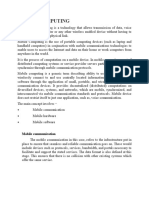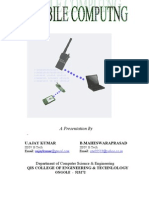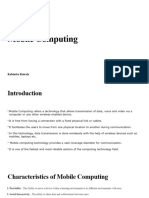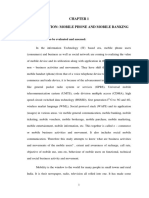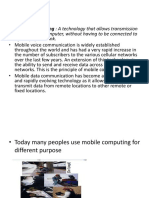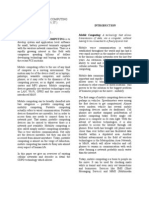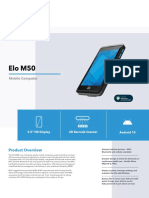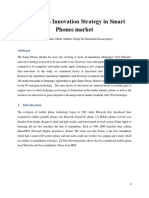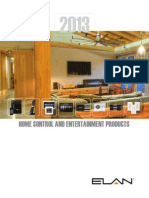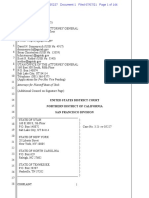0% found this document useful (0 votes)
10 views4 pagesMobile Communication 2051
The document discusses mobile communication technology, which enables the transmission of data, voice, and video without a fixed connection, highlighting its evolution from basic calling features to advanced applications like mobile banking and entertainment. It emphasizes the transformative impact of mobile communication on various sectors, including business, media, and disaster relief, enhancing productivity and connectivity. The article concludes by noting the ongoing importance of mobile communication in improving services and user experiences across different fields.
Uploaded by
buomwuthot19Copyright
© © All Rights Reserved
We take content rights seriously. If you suspect this is your content, claim it here.
Available Formats
Download as PDF, TXT or read online on Scribd
0% found this document useful (0 votes)
10 views4 pagesMobile Communication 2051
The document discusses mobile communication technology, which enables the transmission of data, voice, and video without a fixed connection, highlighting its evolution from basic calling features to advanced applications like mobile banking and entertainment. It emphasizes the transformative impact of mobile communication on various sectors, including business, media, and disaster relief, enhancing productivity and connectivity. The article concludes by noting the ongoing importance of mobile communication in improving services and user experiences across different fields.
Uploaded by
buomwuthot19Copyright
© © All Rights Reserved
We take content rights seriously. If you suspect this is your content, claim it here.
Available Formats
Download as PDF, TXT or read online on Scribd
/ 4


